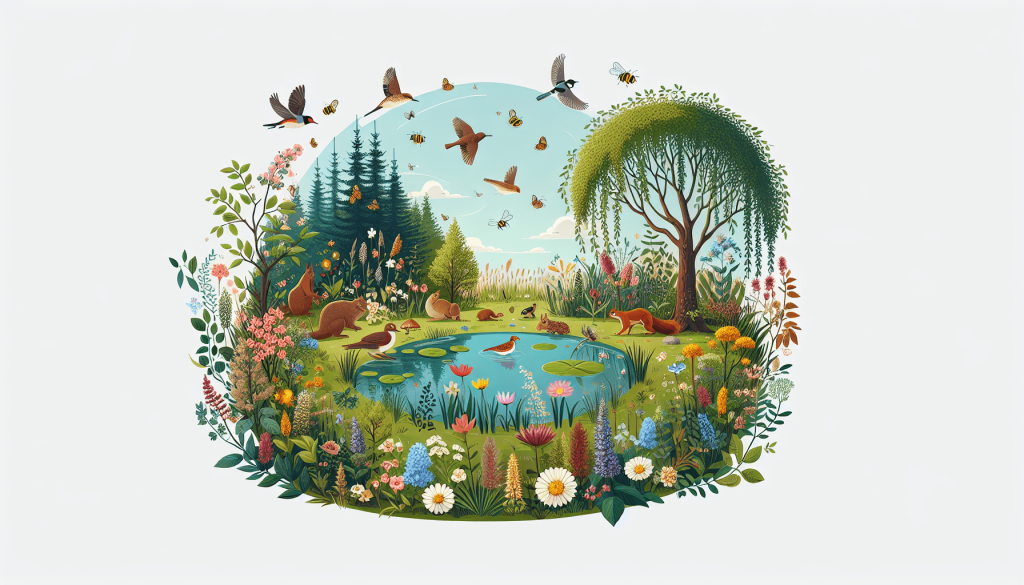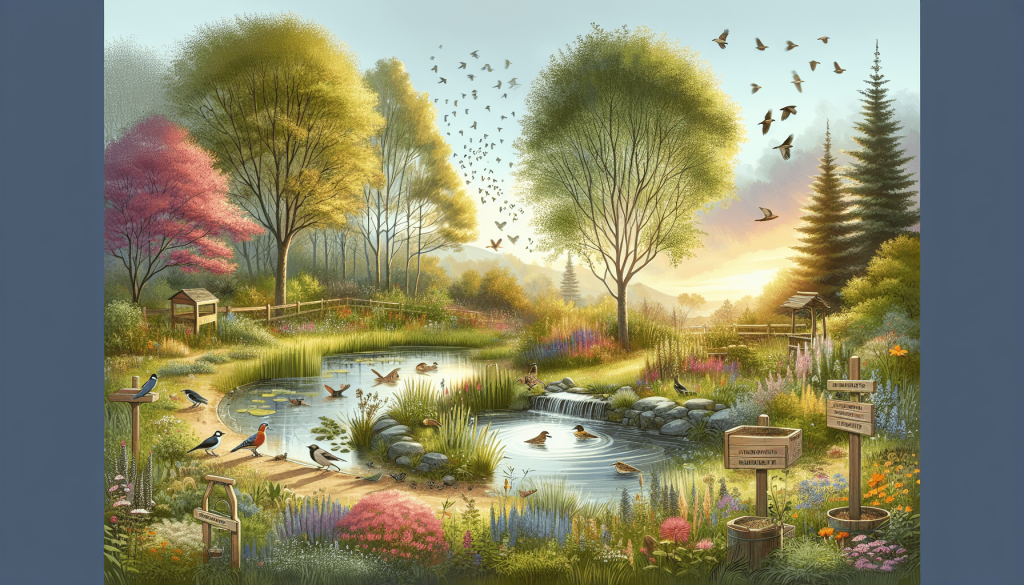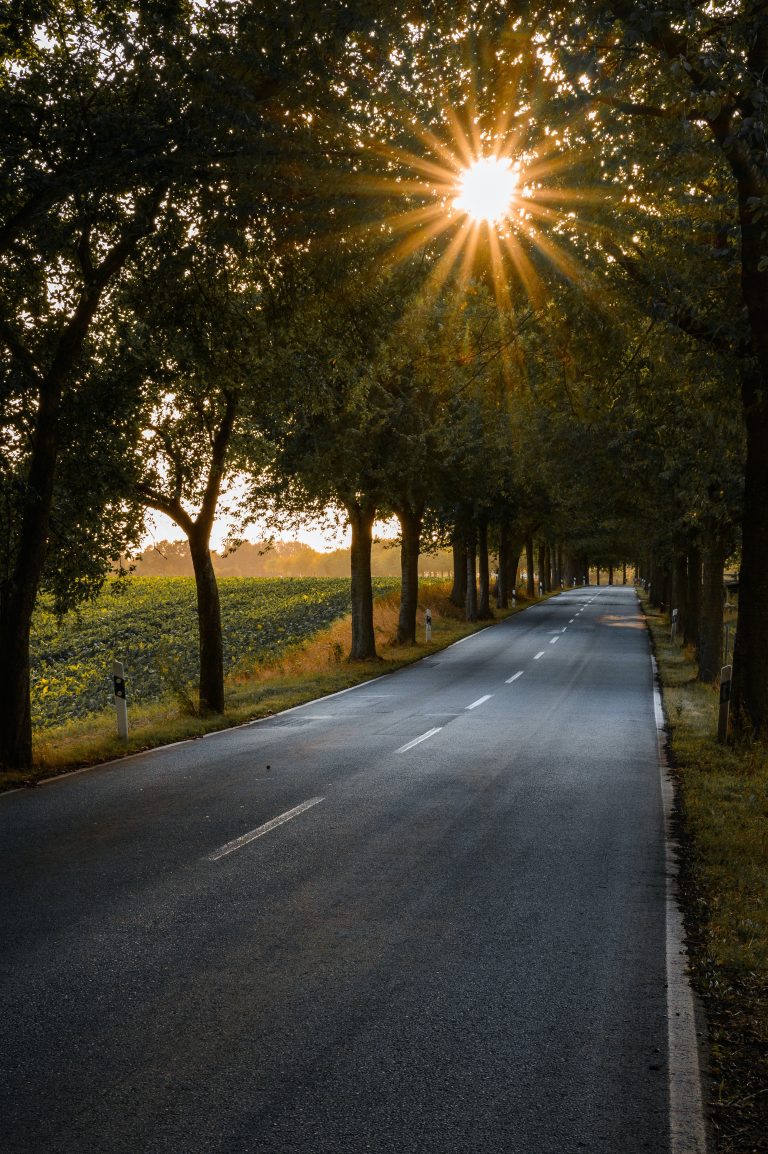Imagine yourself in a world where your backyard is teeming with life, vibrant colors, and curious critters. Envision the joy of waking up to the melodious songs of birds and discovering sparkling webs spun by industrious spiders. In this article, we explore several ingenious strategies that will help you attract and support local wildlife right in your own community. From creating inviting habitats to providing nourishment and shelter, you’ll discover simple yet effective ways to transform your surroundings into a haven for the fascinating creatures that share our planet. So, embark on this adventure with us as we unlock the secrets to coexisting harmoniously with the remarkable wildlife in your area.
Table of Contents
ToggleCreating Habitat
When it comes to attracting and supporting local wildlife, creating a suitable habitat is key. By providing the necessary elements for their survival and reproduction, you can encourage a diverse range of species to make your backyard their home. One of the first steps in creating habitat is planting native vegetation. Native plants are well adapted to the local environment and provide food and shelter for a variety of wildlife. Choose a mix of flowers, shrubs, and trees to create a diverse and inviting landscape.
Another important aspect of creating habitat is providing food sources for wildlife. This can be achieved by planting a variety of plants that produce berries, seeds, or nectar. In addition, consider installing birdhouses and bird feeders. These structures provide a safe place for birds to nest and feed, attracting a colorful array of winged visitors to your yard.
To further enhance nesting opportunities, it’s beneficial to provide nesting materials. Items such as twigs, leaves, and feathers can be strategically placed in your yard, making it easier for birds to build their nests. By offering these materials, you can attract a wider range of bird species and contribute to their successful reproduction.
Conserving Water
Water is a precious resource, and by conserving it in your garden, you can create a more sustainable and wildlife-friendly environment. One way to conserve water is by installing birdbaths or small ponds. These water features not only provide a place for birds and other animals to drink and bathe but can also serve as attractive focal points in your yard.
Avoiding over-watering is another important step in water conservation. Pay attention to the needs of your plants and water them accordingly. Using water-saving techniques such as drip irrigation or mulching can help reduce water loss through evaporation and ensure that your plants receive just the right amount of water.
Creating Shelter
Wildlife need shelter to feel safe and secure. By maintaining brush piles in your yard, you provide an ideal habitat for small mammals, reptiles, and insects. These piles of branches, leaves, and logs offer protection from predators and serve as nesting sites for many species.
Installing bat houses can also be an effective way to create shelter for these amazing creatures. Bats play a vital role in controlling insect populations and can benefit your garden by reducing the need for chemical pesticides. By providing them with a suitable place to roost, you can encourage these beneficial creatures to take up residence in your yard.
Additionally, consider incorporating rock piles or log piles into your landscape. These natural features offer hiding places for animals and create microhabitats that attract a variety of species. Planting dense shrubs or trees can also provide valuable shelter, allowing birds and small mammals to find refuge from harsh weather conditions and predators.
Avoiding Chemicals
Using organic or natural alternatives to chemical pesticides and herbicides is not only better for the environment but also promotes the health and well-being of wildlife. By opting for these alternatives, you can minimize the impact on beneficial insects, birds, and other creatures that help maintain a balanced ecosystem.
Minimizing the use of pesticides and herbicides is crucial, as these chemicals can have detrimental effects on wildlife populations. Whenever possible, try to find natural solutions to control pests or manage weeds. Introducing biological controls, like ladybugs for aphid control, can be an effective and eco-friendly approach.
In addition to avoiding chemical pesticides and herbicides, it’s also important to steer clear of chemical fertilizers. These synthetic fertilizers can leach into water bodies and harm aquatic organisms. Instead, opt for organic fertilizers or use compost to nourish your plants naturally. Creating a chemical-free zone in your yard can provide a safe haven for wildlife and contribute to a healthier ecosystem.
Providing Water Sources
Access to clean water is essential for the well-being of wildlife. By installing birdbaths or small water features, you can ensure that birds and other animals have a reliable water source for drinking and bathing. It’s important to keep these water sources clean and regularly filled to meet the needs of wildlife throughout the year.
Consider creating shallow areas within the water features to accommodate insects and other small creatures. These shallow areas provide valuable habitat for insects to lay their eggs and attract a diverse range of wildlife to your yard. By providing water sources, you can help sustain local wildlife populations, especially during periods of drought or hot weather.
Maintaining a Natural Lawn
Maintaining a natural lawn not only benefits the environment, but it also supports local wildlife by providing valuable habitat and food sources. Mowing your lawn at a higher height allows grass to grow longer, creating a favorable environment for insects like butterflies and bees. These insects play an important role in pollinating plants and contribute to the overall health of your garden.
Reducing or eliminating the use of chemical fertilizers is another important aspect of maintaining a natural lawn. Chemical fertilizers can be harmful to wildlife, especially if they leach into nearby water bodies. Instead, embrace organic lawn care practices by using compost or natural fertilizers that release nutrients slowly over time.
Leaving grass clippings on the lawn after mowing can also benefit wildlife. The clippings provide additional nutrients to the soil and create hiding places for small animals. Consider incorporating low-growing plants like clover into your lawn, as they attract pollinators and require less maintenance than traditional grass.
Controlling Invasive Species
Invasive plants and animals can have a detrimental impact on native wildlife and ecosystems. It’s important to identify and remove invasive plants from your yard to prevent them from outcompeting native species. Replace them with native plants that provide similar benefits and support local wildlife populations.
Limiting the use of non-native plant species is another way to control invasive species. Non-native species often lack natural predators and can rapidly spread, negatively impacting native plants and animals. By choosing native plants, you not only support local wildlife but also help create a more resilient and diverse ecosystem.
Monitor and manage invasive animals in your yard to reduce their impact on native wildlife. Consult with local wildlife experts or pest control professionals for guidance on effectively controlling invasive species in a responsible manner.
Supporting Pollinators
Pollinators such as bees, butterflies, and hummingbirds play a crucial role in plant reproduction and food production. You can support these important creatures by planting pollinator-friendly flowers in your yard. Choose a variety of nectar-rich blooms that provide a continuous food source throughout the seasons.
In addition to flowers, providing nesting sites for bees is essential. You can install bee houses or create small holes in wood to attract and support solitary bee species. These bees are excellent pollinators and contribute to the health and productivity of your garden.
Avoid using pesticides near flowering plants, as these chemicals can harm pollinators. Instead, implement natural pest control methods or encourage natural predators of pests to maintain a balanced ecosystem. By supporting pollinators, you contribute to the overall health of your garden and help ensure the production of fruits, vegetables, and seeds.
Balancing Wildlife and Pets
If you have pets, it’s important to create a balanced coexistence between them and local wildlife. Keeping cats indoors is one of the most effective ways to protect both wildlife and your pets. Cats are natural hunters, and allowing them to roam freely can have detrimental effects on bird and small mammal populations.
Provide wildlife-friendly areas in your yard that are separate from areas where pets are allowed. Creating a designated space where wildlife can find food, water, and shelter away from your pets can minimize conflicts and provide a safe refuge for local wildlife.
Preventing pets from hunting or disturbing wildlife is crucial for maintaining a healthy ecosystem. Consider using bells or other deterrents on collars to alert wildlife of your pet’s presence. By taking these steps, you can help preserve the beauty and diversity of the natural world while ensuring the safety and well-being of your beloved pets.
Educating and Raising Awareness
Educating yourself and others about the importance of attracting and supporting local wildlife is vital for long-term conservation efforts. Promote wildlife-friendly practices in your community by sharing your knowledge and experiences with neighbors, friends, and local organizations.
Organize educational programs and workshops to teach people about the benefits of creating wildlife-friendly habitats. Invite experts to talk about local species, conservation methods, and the role each person can play in supporting wildlife.
In addition to personal outreach, signage and media can be effective tools to promote conservation efforts. Place signs in your yard or community spaces to educate passersby about the importance of protecting and preserving local wildlife. Utilize social media platforms and local publications to share information and stories that inspire others to take action.
By combining individual efforts and community awareness, we can collectively make a difference in protecting and preserving local wildlife. Together, we can create a harmonious and sustainable environment that fosters the well-being of both wildlife and humans.








